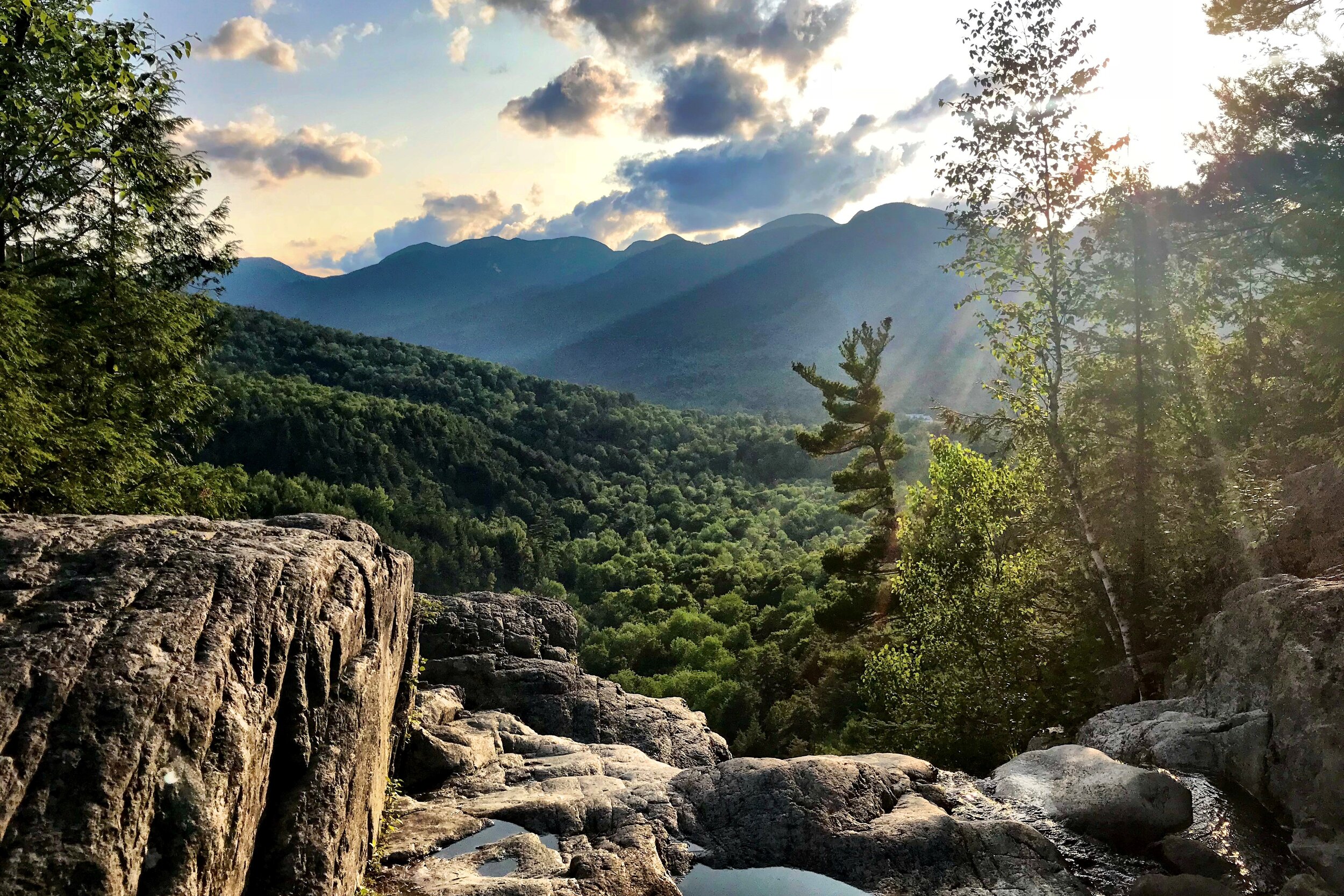
About the Adirondack Park
Unique to the United States, the Adirondack Park’s boundaries are vast forests and rolling farmlands, towns and villages, mountains and valleys, lakes, ponds and free-flowing rivers, private lands and public forest.
The Adirondacks are known for their extensive wild landscapes, which includes tracts of old-growth forest, wildflowers abound, and hundreds of species of shrubs, herbs and grasses may be encountered in a day's outing.
Outdoor recreation opportunities are unparalleled in the Adirondack area. Visitors to DEC campgrounds can sample boating, horseback riding, picnicking, hiking, mountaineering, hunting, fishing, swimming, water skiing, scuba diving and nature photography. Some campgrounds have extended the season into the fall for fishing, hunting and leaf peeking.
Foot trails extending over 2,000 miles course throughout the park, more than half maintained by New York State Department of Environmental Conservation. From the southwest corner of the park at Old Forge, a popular canoe route begins and follows a string of lakes, ponds, rivers and portages nearly 100 miles to Tupper Lake and the Saranac lakes in the north-central region.
Photo credit: Kaily Gashi
Photo credit: Luther Dow
For a real getaway, consider the 500 campsites spread over 48 islands on Lake George, Indian Lake and Saranac Lake.
The Adirondacks are rich in history with old forts, museums and antique shops scattered throughout the park. Other attractions of the region are several scenic highways and the Olympic Center in Lake Placid.
Photo credit: Bob Visicaro
Photo credit: Brannon Anders




